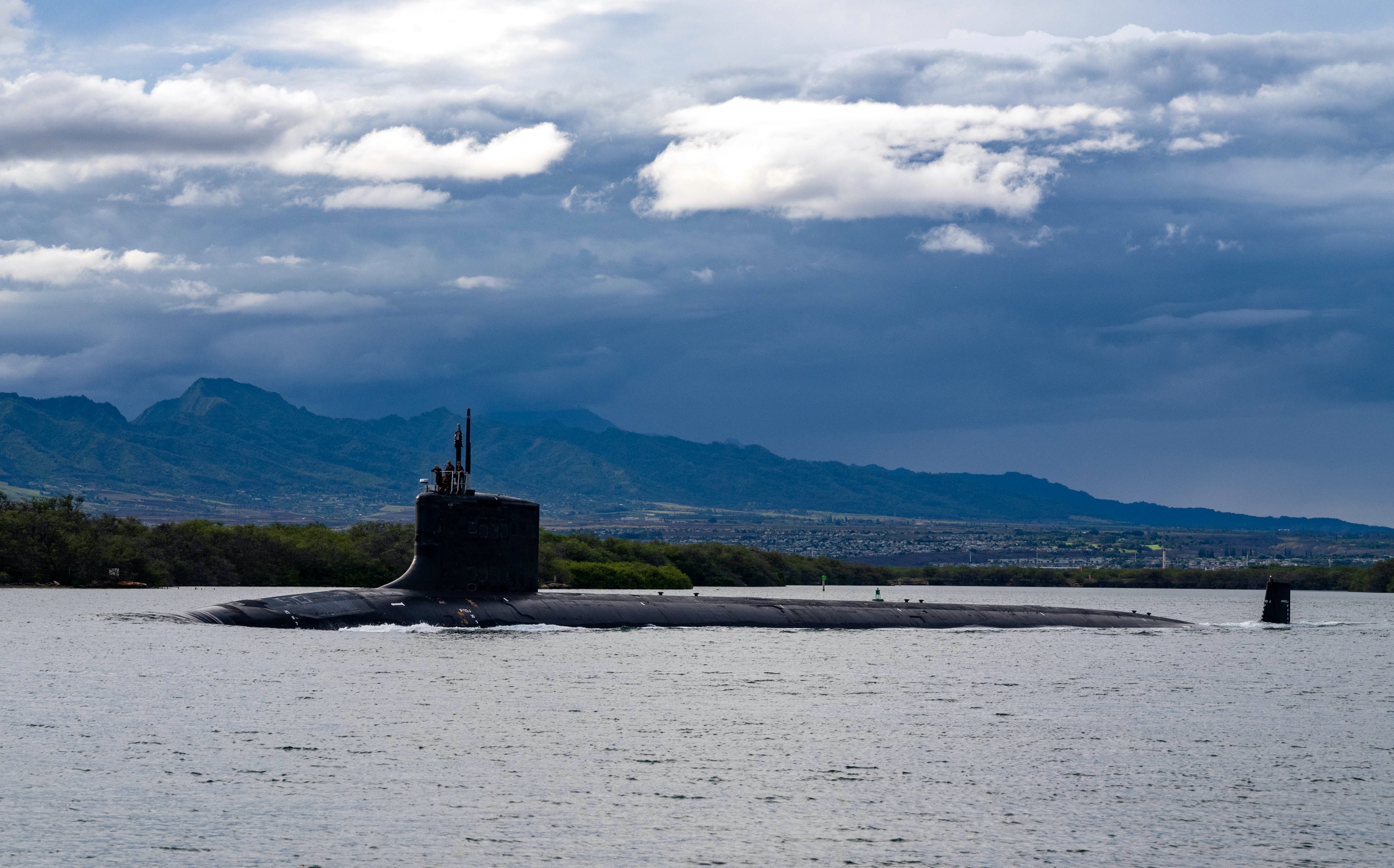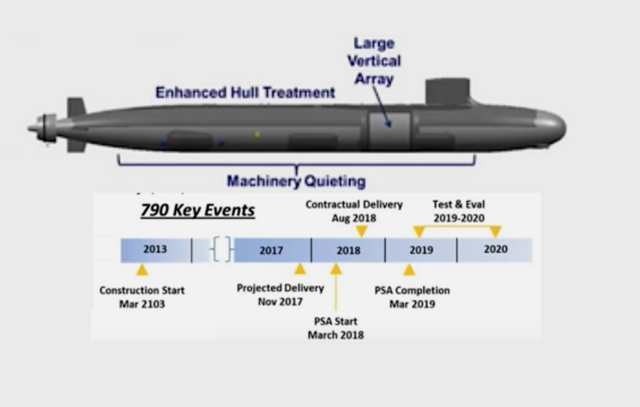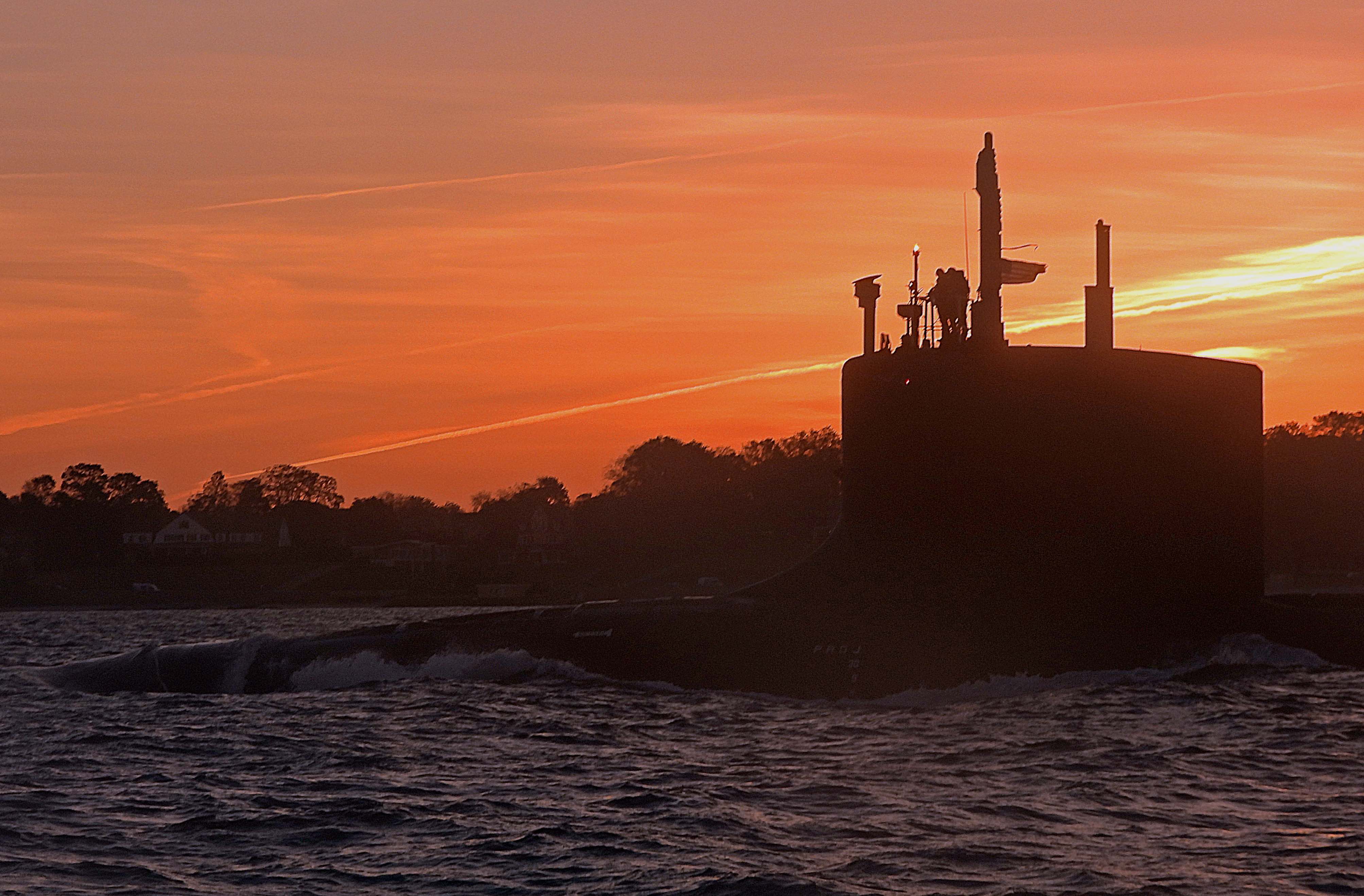
ARLINGTON, Va. – The next U.S. nuclear attack submarine must require less maintenance, be fast, quiet and packed with torpedoes, the service’s director of undersea warfare said on Thursday.
The SSN(X) nuclear attack boat will be more focused on the war in blue water than the multi-mission Virginia-class submarines, which are designed to operate closer to shore for missions like signals intelligence and special operation missions.
“Virginia remains the most capable multi-mission submarine in the world – bar none,” Rear Adm. Doug Perry, the director of the undersea warfare division on the chief of naval operations staff (OPNAV N97), said last week. “But we must maintain our undersea advantage by investing for future capabilities. And we know we need to start that work today to make sure we can deliver SSN(X) in time of need, and without lots of technical or schedule risk.”
In 2019, the Congressional Budget Office estimated that the SSN(X) boats could cost up to $5.5 billion per hull. The current Virginia-class boats cost about $2.8 billion per hull, while the Block Vs with the 80-foot Virginia Payload Module will cost about $3.2 billion.
“The Navy indicates that the next-generation attack submarine should be faster, stealthier, and able to carry more torpedoes than the Virginia class—similar to the Seawolf-class submarine. CBO therefore assumed that the SSN(X) would be a Seawolf-sized SSN, which displaces about 9,100 tons when submerged, and would have an all-new design in keeping with the Navy’s description of it as a fast, lethal next-generation attack submarine,” the CBO wrote.
Before Virginia, the Navy developed the Sea Wolf-class to be a deep-diving submarine with a weapons room that can field about 50 torpedoes.
Perry said, in broad strokes, SSN(X) would take the heavily-armed Seawolf template, combine the stealthy technology developed for Virginia and keep the time in maintenance to a minimum.
Outside of a classified initial draft capabilities document, “we don’t know the specific characteristics that will be in SSNs. But we do believe that the next submarine will have a large horizontal payload capacity. You can read that as it’s going to carry a lot of torpedoes. And we know how to do that. It’ll be fast. And it’ll have acoustic superiority. That’s both sensors to hear the other ships out there as well as stealth – staying quiet,” Perry said.
“We know how to do all of these things, but we have to integrate them into one platform.
Speed and large payload? We did that on Seawolf, and we need to pull that forward to a modular construction submarine.”

Part of the development of more offensive submarines, the Navy restarted the Mk-48 Advanced Capability (ADCAP) heavyweight torpedo in 2016.
“The heavyweight torpedo will remain the weapon of choice for the submarine for this for the foreseeable future, primarily due to its inherent stealth, its destructive effects in the battlespace, and [it’s] pretty difficult to defend against and it also [preserves] the stealth of launch platform,” Perry said.
The development of the Navy’s Acoustic Superiority Program began on Virginia-class USS South Dakota (SSN-790), which commissioned in 2019, Perry said. The package includes a large vertical array mounted on the hull just aft of the sail, a special exterior coating and machinery quieting improvements inside the boat.
Based on the timing of the construction of the Columbia-class, the new class would come just as the construction of the class of 12 nuclear ballistic missile submarines is ending in the 2040s and in the short term design work should begin soon.
“With Columbia 95 percent design complete, now is the time to begin transitioning that experienced design workforce,” Perry said.
“Fielding any new class submarine is challenging, but we got to strike while the iron is hot.”
The Virginia boats now – and the Columbia boats in the future – are built in a teaming arrangement between Huntington Ingalls Industries and General Dynamic Electric Boat. Each yard builds part of a boat and the components are barged to each yard for final assembly, with EB being the lead yard for the design of each class. Perry said that the workforce would be key to making SSN(X) affordable.
“This maintains a steady demand signal for the shipyard workforce, which is a key element of developing and sustaining a resilient submarine industrial base,” Perry said.

The Navy is also considering how it will leverage unmanned undersea vehicles with its new class.
“We know the ability to influence the battlespace and leverage the seafloor is to get to the bottom of the ocean you will need UUVs,” Perry said.
“That requires a submarine interface that will drive what SSN(X) has to be in terms of a dimension for an interface that will launch and recover [UUVs]. It may be a torpedo tube it may be something different.”
On the other end of construction, the Navy is working to increase the amount of time the submarines can operate by reducing time in maintenance.
“SSN(X) has to have high operational availability, [we’ve] got to be able to keep that ship at sea. And that gets to sort of the class maintenance plan. We’ve learned a lot from operating [the Los Angeles class], then Seawolf and Virginia. We are analyzing those class maintenance plans with PEO Subs and making sure that the class maintenance plan we’ve come up with gives us the highest operational building availability possible,” Perry said.
“That’ll be really part of our calculus as we define the work through the capability development document and [requirements] process and defining what SSN(X) needs to be.”





